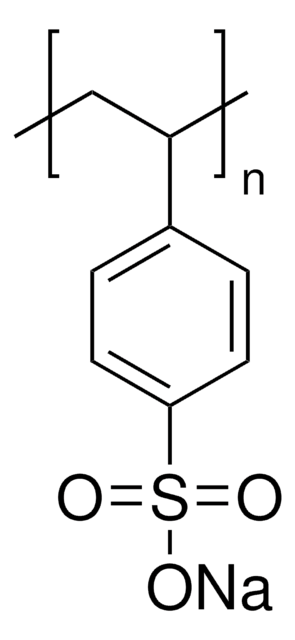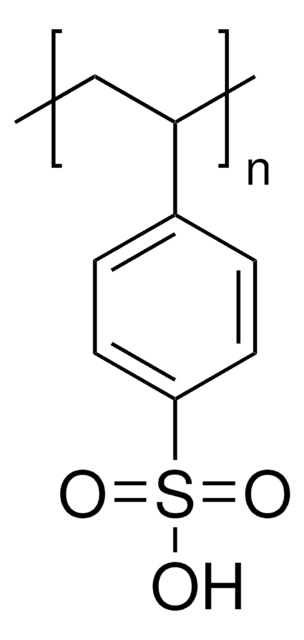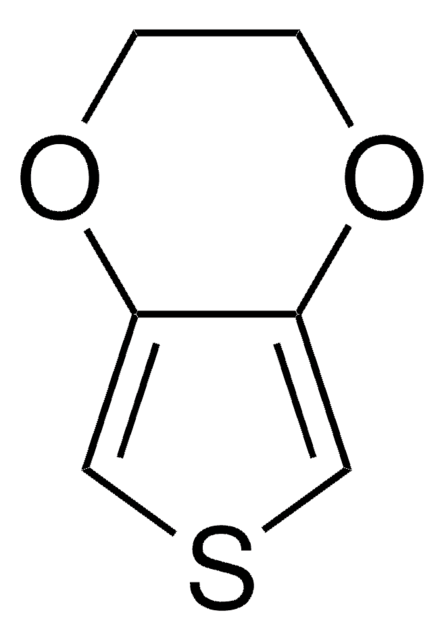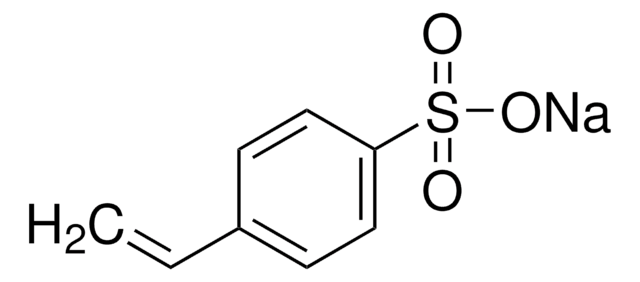Kluczowe dokumenty
434574
Poly(sodium 4-styrenesulfonate)
average Mw ~1,000,000, powder
Synonim(y):
PSS, Poly(4-styrenesulfonic acid) sodium salt
About This Item
Polecane produkty
Formularz
powder
masa cząsteczkowa
average Mw ~1,000,000
lepkość
70-170 cP, 10 wt. % in H2O(25 °C, Brookfield)(lit.)
mp
450 °C (dec.)
rozpuszczalność
H2O: soluble
gęstość
0.801 g/mL at 25 °C (lit.)
ciąg SMILES
[S](=O)(=O)(O)c1ccc(cc1)C=C
InChI
1S/C8H8O3S/c1-2-7-3-5-8(6-4-7)12(9,10)11/h2-6H,1H2,(H,9,10,11)
Klucz InChI
MAGFQRLKWCCTQJ-UHFFFAOYSA-N
Szukasz podobnych produktów? Odwiedź Przewodnik dotyczący porównywania produktów
Zastosowanie
Cechy i korzyści
Kod klasy składowania
11 - Combustible Solids
Klasa zagrożenia wodnego (WGK)
WGK 2
Temperatura zapłonu (°F)
Not applicable
Temperatura zapłonu (°C)
Not applicable
Środki ochrony indywidualnej
Eyeshields, Gloves, type N95 (US)
Wybierz jedną z najnowszych wersji:
Masz już ten produkt?
Dokumenty związane z niedawno zakupionymi produktami zostały zamieszczone w Bibliotece dokumentów.
Klienci oglądali również te produkty
Produkty
Profesor Rivnay (Northwestern University, USA) omawia wykorzystanie organicznych mieszanych przewodników jako alternatywy dla skutecznego połączenia jonowego świata biologii ze współczesną mikroelektroniką.
Professor Rivnay (Northwestern University, USA) discusses using organic mixed conductors as an alternative to efficiently bridge the ionic world of biology with contemporary microelectronics.
We present an article that discusses two applications in particular; first, using these layers as polyelectrolyte membranes to control permeability.
Nasz zespół naukowców ma doświadczenie we wszystkich obszarach badań, w tym w naukach przyrodniczych, materiałoznawstwie, syntezie chemicznej, chromatografii, analityce i wielu innych dziedzinach.
Skontaktuj się z zespołem ds. pomocy technicznej






